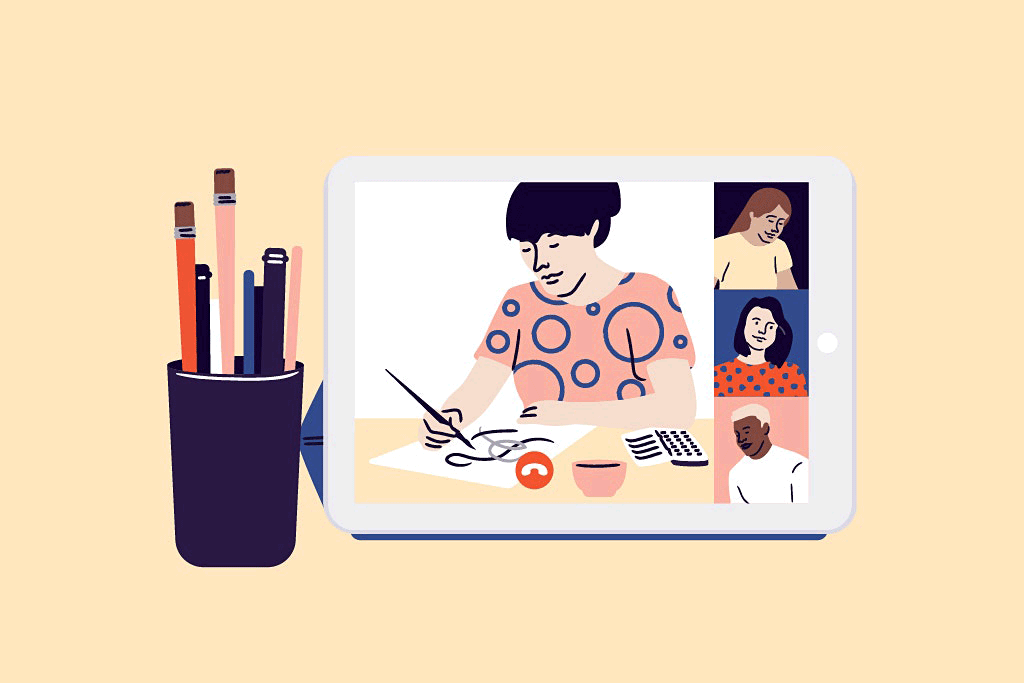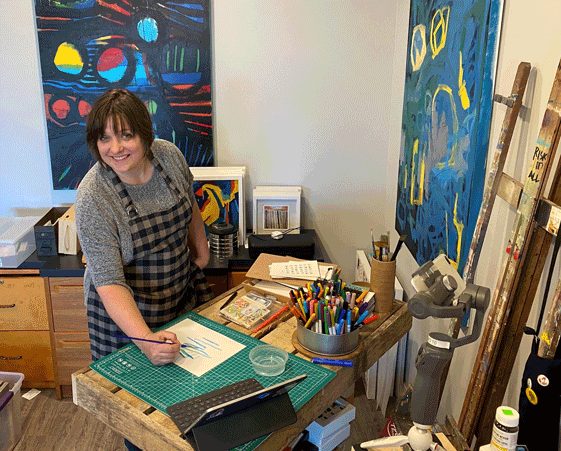2020 was a rough year for nearly everyone, and while optimism is appreciated, it’s important to remember that the state of the world will not mend itself right away. With the pandemic hitting the United States hard, most schools shut down in-person learning for a short time or a full school year, leaving reopening plans vague. Schools and teachers have had to scramble to adjust their teaching styles and methods to switch to remote learning. Due to art being such a supplies-heavy and hands-on subject, art teachers have fared quite differently during the quarantine.
Responses came from across the country, with various school types, age groups, and experiences. All of the teachers contacted have been teaching almost exclusively remotely since March of 2020, when most school districts in the US shut down.

The most persistent trend amongst these educators was a concern for the children they teach. A few of them noted the economic and resource disparity between children in the same schools and classes. One teacher, Christina P., explained that she works at a Title I public school in Aurora, Colorado. The categorization means that many of her students are low-income, and the schools attempt to provide a safe space for them. For a few of these students, the school offers regular meals and support. Christina said that this new reality had taught her that she needs to build a relationship with her students. Along with the chronic stress of school and the pandemic, many students have additional pressure based on the environment in which they are learning.
Kaitlin D. taught at a charter school in Chicago and described the situation for some of her students as “really hard for students to stay focused depending on where they are. Some students go to a crowded daycare, while others are in the same room as younger siblings or parents watching tv. Background noises can get noisy, depending on the student. Some hop into class while in the car and driving somewhere. Getting all the students to engage in art remotely has been exhausting.”
Another teacher based in Springfield, MA, expressed a similar sentiment and said that this year has made her want to stop teaching. She teaches at an alternative school, which generally means that the school’s students already struggle with traditional learning environments. According to Springfield’s teacher, the online environment only exacerbates the issues, “I have 68 students in all. Maybe half show up. Maybe a quarter of those hand in work on a good day. My kids are overwhelmed, and art is the class that matters least for them, so they don't bother doing work.”
The connecting trend in each teacher’s sentiments was the amount of support they have received from the school, district, or union. Teachers with more support reflected a more positive, albeit not entirely perfect, experience, and teachers with less support describe a more negative situation.

Support in arts education ultimately comes down to resources and access to materials, meaning that when every home doesn’t have access to these supplies, tensions rise. About half of the teachers contacted said that after the initial rush of teaching remotely, they could send small supplies kits home with the kids. One sent basic drawing supplies, i.e. paper, pens, pencils, another sent kits with tempera paints, and some schools also sent home electronic devices. However, many of the teachers still rely on families to provide materials like markers and crayons. Mikaela T. teaches at an IB middle school in Washington DC, noted that “my team and I made a conscious choice to have a variety of options for students to complete their projects so that we would struggle less with the inequities of families who may not have supplies at home. In the future, I would like to implement more technology into the physical classroom space. I hope that COVID has emphasized the necessity for technological literacy and access in public education.”
Most teachers also claim to have been utilizing online resources for their educational purposes, in addition to the traditional materials. Online colouring sheets and free drawing programs are a popular choice, and Google plugins like Pear Deck have added an interactive element to help teachers and students stay engaged. Most of the teachers offer life lessons, however, each of them expressed some change in their schedule/amount of time they have with students, and a few of them record lessons for students who miss the live class.
While technology is a big hit, some teachers needed other creative ways to keep students engaged at home. Laura M. in Buffalo, NY, utilized materials students could find at home. “Lessons in the spring included found object colour wheels, creating patterns with objects and drawing them, how to draw a symmetrical insect, paper weaving, making a spider out of aluminum foil, etc.” Other teachers also had students use alternative materials to create art, like Flaming Hot Cheetos.
While this pandemic has negatively impacted teaching in general and made an already difficult job more complicated, there are few positive takeaways. First, there are great teachers out there, and they care deeply about their students and the education those children are receiving. Second, art teachers are a creative bunch! When faced with the seemingly impossible, they have risen to the occasion, adapted, and are bringing the best they can to their classrooms. Third, US education is far behind its target goals, and individual districts need to address inter-school disparities by getting resources to the kids who need them.
The future of this coming year is still uncertain, but this past year supports the prediction that these teachers and others like them across the country will step up to provide their students with a creative outlet. A few teachers expressed the need for donations, so if you’d like to help give students a better arts education, pandemic or no pandemic, consider donatingsupplies to your local school in need.
